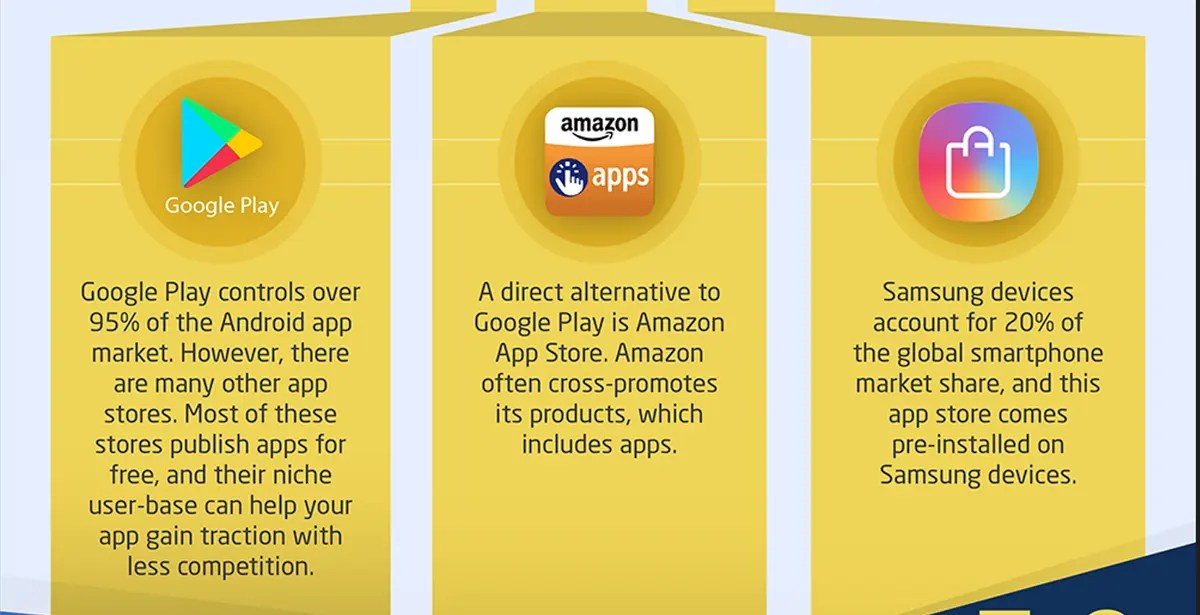This is How You Make Money Creating Free Apps
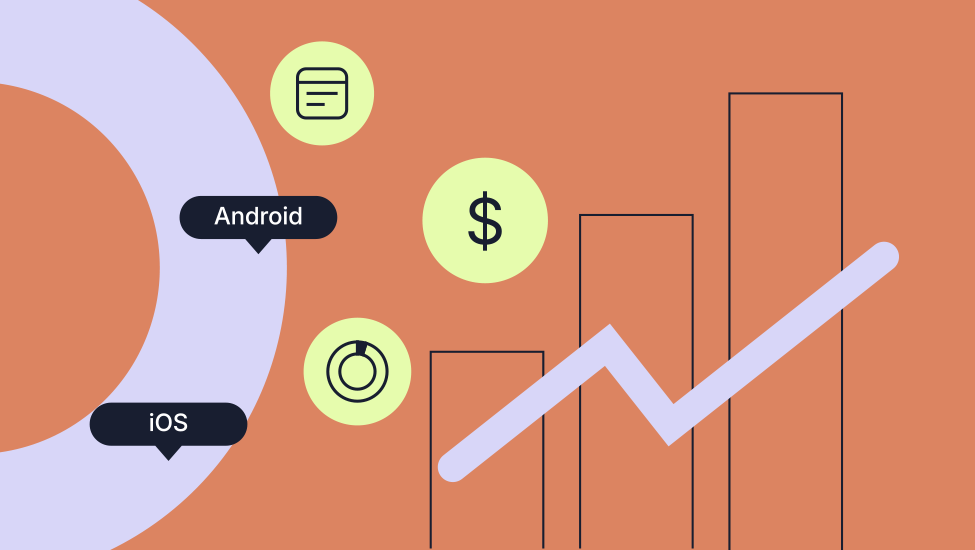
🧃 Straight to the Juice
- 95–97% of apps on iOS and Android are free, making monetization essential for growth.
- Monetization models include: in-app ads, in-app purchases, freemium, subscriptions, affiliate marketing, selling data, licensing, and hybrid strategies.
- Finding the right ad type and network (e.g., AdMob, Unity Ads) is key to boosting revenue without hurting UX.
- Hybrid monetization and A/B testing help optimize income across diverse user segments.
In 2024, mobile users downloaded 137.8 BILLION apps.
Do you think all of them were paid? Not even close.
In fact, 95-97% of all available apps are free: on iOS, 95.4% of the 1.83 million apps you don’t have to pay for, while only 4.6% must be purchased. It’s similar on Android, with 96.99% of 2.05 million apps being free and only 3% paid. Free apps dominate the stores and rule the market.
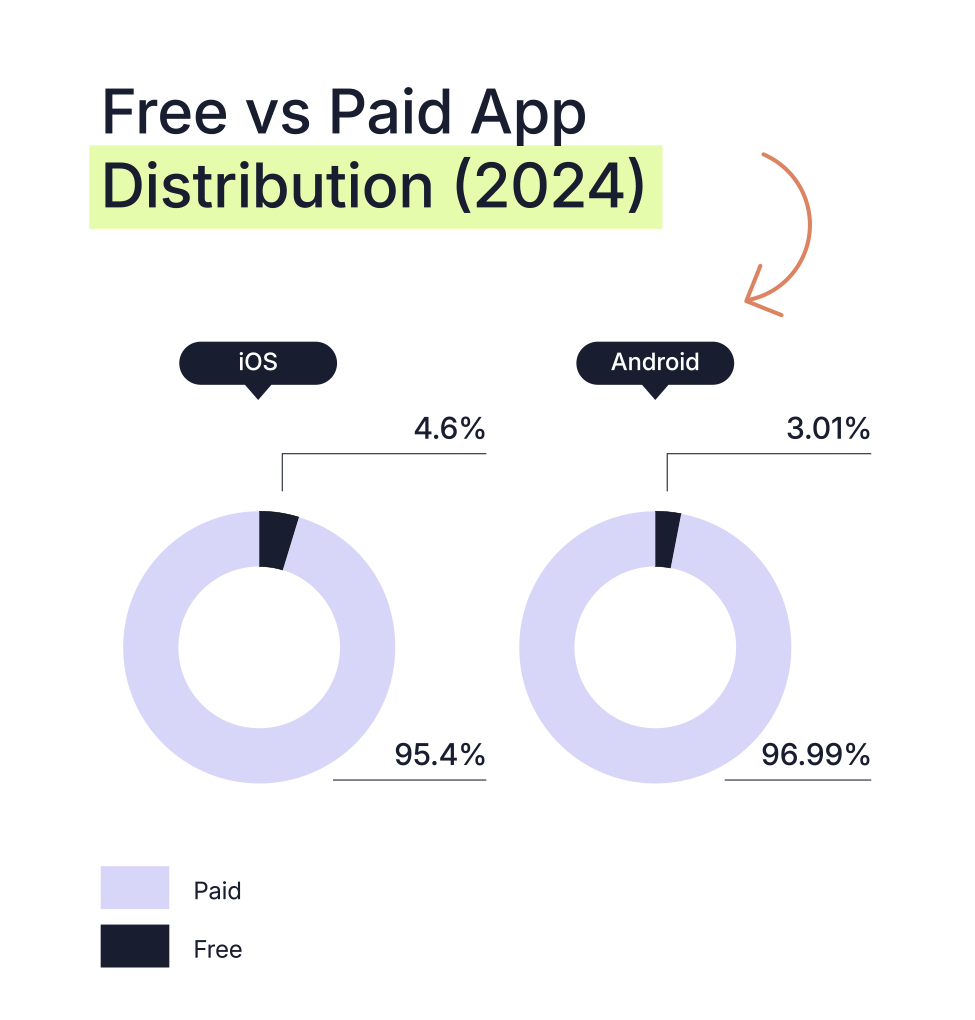
Unless you’re building free apps for fun, you should learn how to turn them into a sustainable business that makes money. Understanding how free apps generate revenue is essential knowledge if you plan to scale, partner, or eventually sell your app to a big buyer like BlueThrone.
So, let’s break down the economics behind free apps.
The Economics of Free Apps
Developers choose to offer their apps for free because it helps maximize reach and gives them instant downloads. It’s easier to click on a $0 price tag than commit to a paid app. Free removes friction and ensures fast user acquisition without huge marketing and targeting costs.
But there’s a catch. Free apps attract TONS of downloads from users with only one thing in common: they’re price sensitive. So how do you monetize that kind of user base?
Free apps have a variety of monetization models, and each one has its pros, cons, and ideal use cases. Choosing the right combination separates profitable apps from failures.
Advertising Revenue
In-app advertising accounts for a huge portion of global app revenue. In 2022, apps made approximately $133 billion; in-app ads were 70% of that. The main types of in-app ads are:
- Banner Ads: Small ads that appear at the top or bottom of the screen are very common.
- Interstitial Ads: Full-screen ads that appear at natural breaks, like after completing a level.
- Rewarded Video Ads: This is when a user agrees to watch a video ad in exchange for a prize, such as extra lives in a game or premium content.
- Native Ads: Thoughtfully designed ads that match the look and feel of the app for a less intrusive user experience.
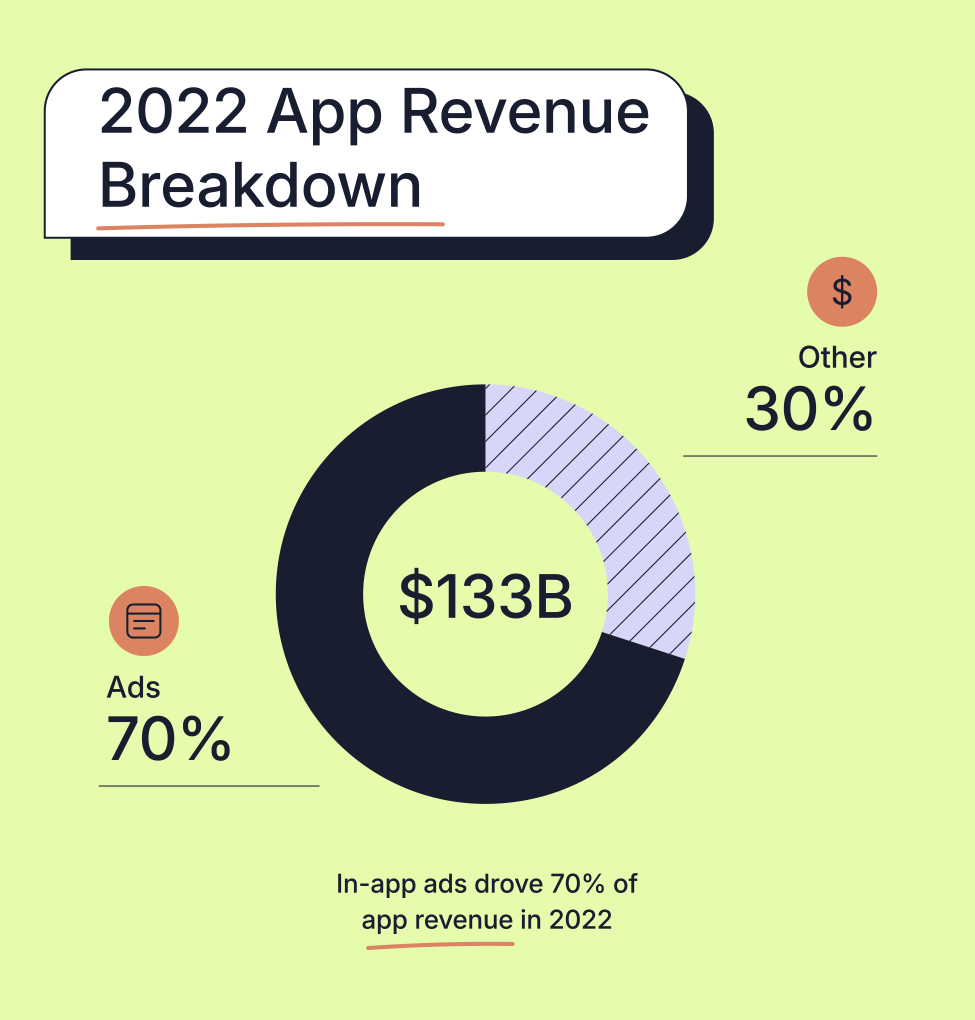
With the advertising revenue model, it’s not only about the type of ads that you show; it’s also about choosing the right ad network. Google AdMob, Unity Ads, and other popular companies connect you to advertisers and help you find the right ads for users who download your app.
Google AdMob is one of the biggest and most widely used networks, and it’s a safe bet if you’re already using Google’s Firebase for app analytics or backend tools. Trying to sell a free gaming app? In that case, Unity Ads is a better pick—it provides the best rewarded videos, hands down.
Other popular ad networks include Meta Audience Network, AppLovin, and IronSource. Meta serves highly targeted ads on Facebook and Instagram, while AppLovin and IronSource offer different ad types across large audiences. If you’re looking to scale, they are your best chance.
Once you have the right ad type and network, you’re all set. Now, you only have to track how your ads are performing. These ad metrics will tell you everything you need to know:
- eCPM (Effective Cost per Mille): How much you earn per 1,000 impressions.
- Fill Rate: Percentage of requests that result in an ad being shown.
- Click-Through Rate (CTR): User engagement with ads.
- Retention: How ads affect user drop-off.
One more thing: finding the right balance between an in-app ad strategy and user experience is key. Show too many ads too often, and you’ll get more uninstalls than revenue.
In-App Purchases (IAP)
IAP is an effective strategy that offers additional features or content for a price:
- Consumables: One-time-use items like virtual currency or boosts.
- Non-Consumables: Permanent features like ad removal or advanced tools.
- Subscriptions: Recurring payments for continuous access.
Everyone’s spending money inside apps these days. In 2024, global in-app purchase revenue on iOS and Google Play hit $150 billion. IAP is a low-risk monetization strategy that’s most likely to succeed, but it does have its favorite type of app: gaming. Just think coins, gems, and lives.
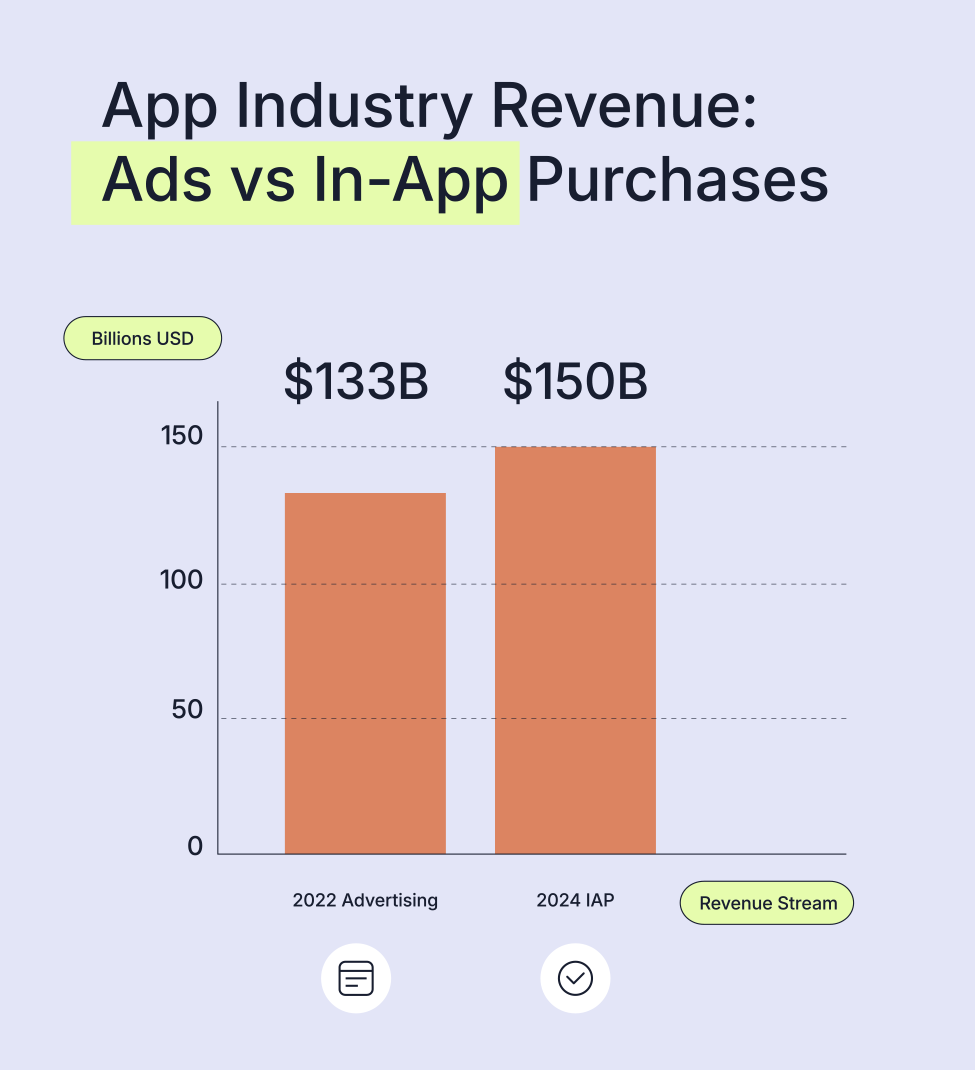
Gaming apps like Clash Royale and Candy Crush make millions from consumables by giving players a quick sense of progress, power, and personalization. It’s all fun, no consequences. Gamified by genre and mechanics, they offer instant gratification for a small price—until it piles up.
Productivity and lifestyle apps also earn revenue from in-app purchases. Apps like Notion offer premium plans with enhanced functionality and added value that satisfied users would gladly pay for. It’s the same with lifestyle apps, where users pay for content bundles, online courses, etc.
How do these apps attract buyers? They use psychological pricing tricks:
- Charm pricing, like $0.99 or $4.99, makes prices seem lower than they are.
- Limited-time deals create urgency and trigger the fear of missing out (FOMO).
- Highlighting value over time, like $1/week, sounds easier to manage financially.
- Bundles drive sales because they offer more value for slightly higher spend.
It may seem like an easy win, but IAP is a strategy that requires careful audience profiling because it relies on psychology. Think about your users and what drives their buying decisions.
Freemium Model
Often seen in SaaS, fitness, and productivity apps, the freemium model gives users free access to core features while charging for advanced capabilities. It’s another effective model that seems easy enough to implement, but it comes with a hitch. One wrong move and your app is dead.
So, what is it? It’s a pitfall that many inexperienced developers fall into. A catch-22, if you will: if the free version is too good, nobody will pay to upgrade; but if it’s not good enough?
At best, you’ll have zero upgrades. But you may also get too many uninstalls.
If you don’t find the optimal mix of functionality and restriction, you won’t make it with the freemium model. Some good examples include limiting the number of projects in a task app, offering only basic filters in a photo editor, or sticking to standard workouts in a fitness app.
You should also try these trusted tactics:
- Test different prompts or feature-gating strategies to improve upgrade rates.
- Make sure the free version feels useful and complete to avoid user frustration.
- Offer short trials or premium features to show value before asking users to pay.
Considering this model? Learn from apps like Duolingo, Trello, Calm, or Canva.
Subscription-Based Monetization
Earning money from app subscriptions only works if you can offer:
- New content, like on streaming platforms, news, or editorial blogs
- Continuous service, such as VPN, fitness tracking, business apps…
- Future updates (productivity, fitness, gaming, and learning apps)
If your app fits the profile, you have a lot of work to do. Subscription-based monetization is a complex strategy that requires continuous competitor research and monitoring. You need the best product or the best prices to make it, so start benchmarking your performance right away.
The key metrics to track are churn rate, MRR (monthly recurring revenue), and conversion rate. The first one tells you how many users cancel per billing cycle, while MMR gives you the total value of active subscribers. Conversion rate measures how many free trial users subscribe.
Speaking of which, there are a few things you can do to boost conversions:
- Offer a free trial period that clearly demonstrates value to users
- Show clear benefit comparisons between free and paid plans
- Send user-friendly onboarding tips and nudges during the trial
- Use annual plans to reduce churn and increase lifetime value
If you’re not sure where to start, study Headspace, Strava, and Spotify.
Affiliate Marketing and Sponsored Content
Promoting partner products or services within your free app is another way to turn it into a profit. Every time a user clicks through or makes a purchase, you earn a commission. You have a budget tracker app? You can use it to promote credit cards. You share recipes? Link to cooking tools!
When it comes to affiliate marketing, finding the right partner for your niche is key. The best ones offer decent payout per click or conversion, and have reliable tracking and payout systems that don’t disturb your cash flow. To begin, check out Impact, CJ Affiliate, and Amazon Associates.
Alternatively, you can display sponsored content within your app and make money per contract or click. It’s a solid strategy to explore, but it can backfire if you don’t protect user trust. Show only content that is relevant and valuable to your users, and even then, avoid over-promoting it.
Selling User Data (with Caution)
Selling user data is…. risky—at best. It’s true that this is a potential revenue stream that can earn you a lot of money, but you must handle it responsibly, transparently, and also, legally.
All apps gather some kind of information, often without users even realizing it. This usually includes technical details like device type, operating system, and language settings. If location permissions are granted, real-time and background location data are typically collected, as well.
This is valuable information that many companies pay good money for. Add to that behavioral patterns: how users navigate the app, what features they use, and how often they return. And if users sign up using email or social media logins, that’s a potential goldmine of information.
As you can already guess, there are legal and ethical standards you can’t ignore:
- GDPR (EU), CCPA (California), and other laws that demand user consent
- You must always be transparent about data collection in your privacy policy
- You need to give users the option to opt in and opt out of data collection
Choosing to bypass in-app data collection rules can get you in serious legal trouble, or worse—it can hurt your brand’s credibility so badly that your app won’t be able to recover.
If you’d rather avoid the risk, there are alternative ways to use data responsibly. Instead of selling user data, some apps aggregate anonymized insights that inform industry trend reports and market research. Even better—use this insight to improve your app and personalize the UX.
Licensing Your App or Technology
Is your app more valuable under the hood? Say you’ve built a slick AI engine, a custom camera module, or a powerful geolocation system; you can sell them to other developers. If you have really good and innovative tech, you might have another revenue stream hiding in plain sight.
Another option is white-labeling, where you allow others to rebrand and use your app as their own. This happens all the time in app categories like fitness, education, and mental health. For example, a famous fitness influencer may have more luck selling your app with their face on it.
Hybrid Monetization Strategies
Sometimes, two monetization models are better than one—especially when you can’t put all your users in the same category. The hybrid approach is a great option for apps with large and diverse user bases: it allows you to meet everyone where they are without frustrating anyone.
For example, you can show ads to casual users, offer in-app purchases or a subscription to power users, and add affiliate links to boost passive income. But they must work together.
To make sure these monetization methods support one another rather than canceling each other out, use A/B testing tools like Firebase Remote Config or RevenueCat. They can help you compare different pricing strategies and experiment with when and how often ads appear.
Also, don’t forget to track lifetime value across different user segments. The data will show you what’s actually working and help you build a monetization stack that delivers.
Here are a few hybrid monetization app examples to get you inspired:
- Duolingo mixes free access with ads and a premium subscription for extra perks.
- Spotify offers an ad-supported tier alongside its premium plans.
- Calm runs a freemium model, layers in subscriptions, and even partners with other brands for exclusive content.
Don’t just stick to a single revenue stream, but build your own path.
When and Why to Sell Your App
How do you know when it’s the right time to sell your app?
If you check most of these boxes, you’re ready:
- You’ve hit a plateau, meaning your app has matured
- Your app revenue is finally consistent and reliable
- Monetization metrics say your strategy is working
- The app serves a clear and well-defined market niche
Having the right monetization strategy when selling is crucial because buyers look at monthly active users, retention, and churn, as well as revenue history and growth trends. In BlueThrone, we recognize these metrics as health signals that reveal your app’s growth potential.
We buy mobile apps all the time and boost their performance through better ASO, UX design, and monetization optimization. If your app is already generating revenue, BlueThrone can help scale it further—or offer you a profitable exit. In both cases, you can make profits.
Make Your Free App Work for You
One thing is for sure: there’s no shortage of ways to make money with a free app. As long as you choose the right monetization strategy for your app’s purpose and the way users interact with it—the one that would keep them coming back—you’ll be able to make a solid living out of it.
And in case you’re serious about scaling your app or preparing for a successful exit, make sure you find yourself a good partner. Come to BlueThone, and we’ll turn your app into profit.


Keep reading






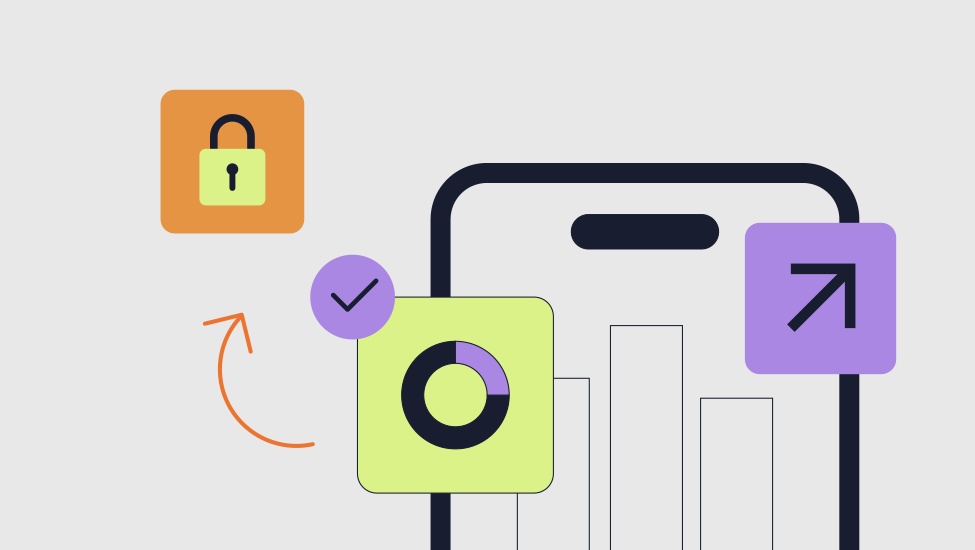










.webp)





